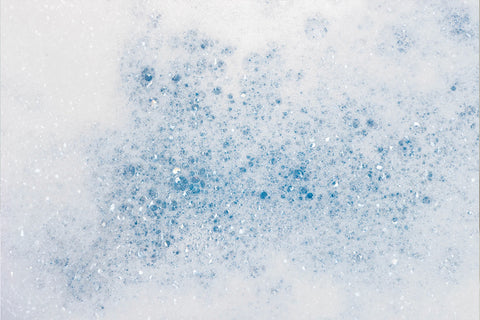Skincare routines are often built proactively: you notice something you’d like to change, then attempt to find a product that claims to help. Whether or not that product is eventually effective against the skin condition, you should expect some evidence of a transition period, for better or for worse.
Why the transition period? Even those with the toughest exteriors have a delicate dermis, stable in its own equilibrium. Many lifestyle and environmental factors contribute to the creation (or distribution!) of this equilibrium—your exercise routine, the weather, and your diet all come into play. Your skin is effective at quickly responding to shifts in its equilibrium, though the effects of these shifts may hang around for a while; we’re talking annoying acne flare ups, redness, and irritation here.
When we notice a negative effect of a shift in skin equilibrium, it can be tricky to point directly to the cause. There are just too many potential causes at play. But we can look to just a few of the key elements of the skin microbiome to see how those changes are shifting the skin equilibrium. Let’s look, for example, at how changes that result in shifts in skin oils and skin pH come into play.
Shifting Oil Equilibrium
If you’re washing your face with harsh surfactants or exfoliants every day, your skin may try to compensate by producing more skin oils. This still may not be enough; people who use these products daily often complain of dry and itchy skin. They are then likely to turn to oil-rich moisturizers, a temporary salve that often comes with its own side effects.
When you quit the harsher product in favor of a more gentle one, it may take your skin a few days to learn that it needs not produce as much sebum (oil). In the transition period you may then feel more oily than usual. But know that’s a sign of your skin getting back in a better balance, and not of the reverse. Some people mitigate this transition oiliness by staying well-hydrated, while others rely on once-weekly exfoliation during this period. Left on its own, this excess oiliness may otherwise cause breakouts.
Shifting pH
Switching between products of different pH may also confuse your skin. The macromolecules responsible for the health of your skin’s microbiome (the good bacteria and enzymes, for example) function best at specific pHs. The top layer of your skin is the most acidic. As you go deeper, towards blood vessels, the pH gradually increases until it reaches the normal, slightly alkaline pH of blood. The transition from a surface pH of ~5.5 to a blood pH just above 7 is a clever trick of your body’s defense system: any environmental contaminant that happens to land on your skin should be neutralized at any of the middling pH levels before it can reach the blood system. For this reason, enzymes meant to work at different levels of the skin are optimized to work at that level’s pH. Your cleanser is meant to work at the top layer of the skin, and should thus have a pH between 5.5-6.

Washing your face with one cleanser may kill one strain and support the other, while a second cleanser may do the opposite. Just like your gut, your face is happiest with the right combo of bacteria in its microbiome. Changing that up may have a noticeable effect on your complexion. Of course, if your are experiencing adverse side effects from shifting up your skincare regimen, it’s best to consult your dermatologist.
It Might Get Worse Before It Gets Better
While you may think of washing your face as a restorative or protective measure, cleaning your skin may make it temporarily vulnerable. In removing the surface layer of oils and dead skin cells you’re effectively stripping away one of the skin’s natural protectants.
The top layer of skin can act as a filter, physically barring some environmental contaminants and stressors from interacting with your new, healthy skin cells below. (It’s the whole point of skin, to act as a barrier). But allow this layer to remain too long, and the network of dead skin will begin to trap sweat and dirt, creating a tasty cocktail for acne-causing bacteria. It’s important to wash dead skin away, but not so much that it totally exposes and makes vulnerable the new layer of skin cells underneath. That’s why a twice-daily gentle cleanse is preferred over harsh soaps and exfoliants. Besides the bonus mindlessness of being able to rely on only one cleanser, the twice daily use of the Everyday Face Wash will prevent you from accidentally taking away too much of your skin’s natural protectants.
Irritation when switching up routines can often be attributed to a change in the material and method of cleansing. If you’ve been scrubbing your face twice weekly with physical abrasives, your skin may feel very oily a week or two after the switch to a gentler cleanser, as it is used to uping oil-production in response to the over-stripping by the exfoliant. It’s also possible to experience skin changes if you’re switching up gel cleansers with different pHs.
The appearance or disappearance of acne depends on too many factors to speak to generally yet accurately here. Suffice to say, any time you disrupt your skin’s equilibrium, an adjust period will follow. Counter intuitively, sometimes switching to a safer and more effective regimen may cause an outbreak of acne. Hang with it. When your skin succeeds in re-establishing its own equilibrium, the flare ups will likely settle down. Best to talk to your dermatologist about this.





























